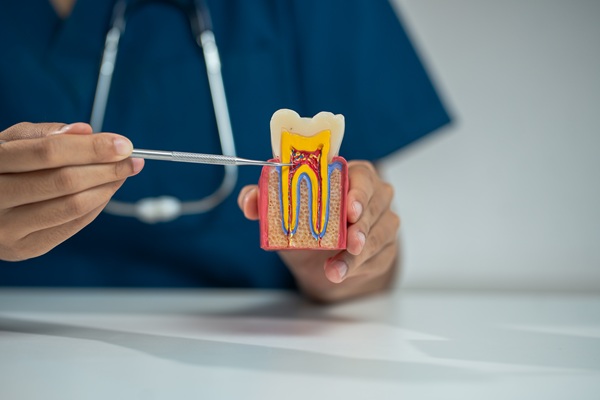Thinking about giving your smile a makeover but not sure where to start? It’s a bit like being in a smile improvement store with options like dental veneers and composite bonding. They’re like different tools in the dental toolbox, each with its own way of fixing up your smile. So, if you’re on the fence about which tool to use for your smile upgrade, let’s break it down in simple terms.
Curious about Dental Veneers?
Dental veneers are thin, custom-made shells crafted from porcelain, designed to cover the front surface of a tooth to transform its appearance. They are a popular cosmetic dentistry option to address a variety of dental imperfections, including discolouration, gaps, chipped or broken teeth, irregular shape or size, and minor misalignments. The process involves removing a small amount of enamel from the tooth’s surface to accommodate the veneer, followed by the bonding of the veneer to the tooth using a dental adhesive. The result is a natural-looking, durable covering that enhances the aesthetics of the smile while providing resilience and strength to the treated teeth. Porcelain veneers are known for their longevity and ability to create a beautiful, uniform smile.
Related: What Are Veneers and How Do They Improve Your Smile?
What is Composite Bonding
Composite bonding, also known as dental bonding, is a cosmetic dentistry procedure that involves the application of a tooth-coloured resin material to the teeth. This method is also used to address dental issues such as chipped or cracked teeth, gaps between teeth, discolouration, and minor misalignments. However, unlike dental veneers, which are fabricated in a dental laboratory, composite bonding can often be completed in a single visit.
What is the Difference between Composite Bonding and Dental Veneers?
While both composite bonding and dental veneers aim to improve the aesthetics of your teeth, they differ in several aspects, ranging from the procedures involved to the materials used. Let’s navigate through these distinctions to help you make an informed decision tailored to your smile goals.
Procedure
Composite bonding is a chairside procedure that usually requires a single visit to the dentist. The dentist applies a tooth-coloured resin to the teeth, sculpts it into the desired shape, and then cures it with a special light. Dental veneers involve a multi-step process. The dentist first prepares the teeth by removing a small amount of enamel. Impressions are then taken, and custom veneers are fabricated in a dental laboratory. The final step involves bonding the veneers to the teeth using dental adhesive.
Material
The material used in composite bonding is a tooth-coloured resin, which is pliable and can be moulded to the desired shape. It is then cured to harden and bond it to the tooth. Veneers can be made from either porcelain or composite resin. Porcelain veneers are known for their durability and natural appearance, closely resembling the characteristics of natural teeth.
Durability
While composite bonding is durable, it may be more prone to staining and wear over time compared to dental veneers. Veneers, especially those made of porcelain, are highly durable and resistant to staining. They can withstand the forces of daily chewing and maintain their appearance for a longer duration.
Number of Appointments
Usually, composite bonding can be completed in a single dental appointment, making it a quicker solution for smile enhancement. The veneer process involves multiple appointments. After the initial consultation and tooth preparation, there is a waiting period while the custom veneers are fabricated in a dental laboratory, requiring a second appointment for the final bonding.
Cost
Composite bonding is a more cost-effective option compared to dental veneers, making it an attractive choice for those on a budget. The cost of dental veneers is often higher due to the customisation, laboratory fabrication, and additional appointments involved in the process.
Removal of Tooth Enamel
The procedure for composite bonding typically requires minimal removal of tooth enamel, preserving more of the natural tooth structure. To accommodate veneers, a thin layer of enamel is usually removed from the tooth surface during the preparation phase. This irreversible step is necessary to ensure a proper fit for the veneers.
Colour Matching and Aesthetics
While initially well-matched, the resin material may exhibit slight colour changes or wear differently than natural enamel, potentially leading to a less precise colour match. Porcelain veneers offer superior colour stability and customisation. Dental laboratories can precisely match the veneers to the desired shade, ensuring a natural and consistent appearance. The translucency of porcelain also mimics the light-reflecting properties of natural teeth, enhancing the overall aesthetics of the smile with a lifelike quality.
Repair and Maintenance
While composite bonding is relatively easy to repair, it may require more frequent maintenance compared to dental veneers. Repairs can be done in-office by adding more resin material, but the longevity of these touch-ups may vary. Porcelain veneers are durable and require minimal maintenance. They are less prone to chipping or staining, reducing the need for frequent repairs. However, if damage does occur, repairs may involve replacing the entire veneer, which could be more complex than addressing issues with composite bonding.
Reversibility
The process of composite bonding is reversible to some extent. If desired, the bonding material can be removed, and the natural tooth remains largely intact. However, this may not be a straightforward process, and there could be changes in the tooth’s appearance after removal. Dental veneers involve the irreversible removal of a thin layer of enamel for proper placement. Once this enamel is removed, it cannot be restored. The decision to get veneers should be carefully considered, as it is a permanent alteration to the natural teeth.
Make Informed Decisions About Your Smile with Bellevue Hill Dental
At Bellevue Hill Dental, we understand the importance of making informed decisions about your dental care. Our commitment is to help you achieve a healthy and beautiful smile through personalised and attentive dental services.
Whether you are considering composite bonding or dental veneers, our caring dentists prioritise minimally invasive procedures to ensure the preservation of your natural tooth structure while delivering stunning smile transformations. We recognise that each individual is unique. As such, our team is dedicated to providing tailored solutions that align with your preferences and goals.Book a consultation with our Bellevue Hill dentists so we can work together towards helping you achieve the pleasing smile you desire.




